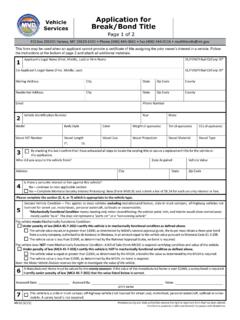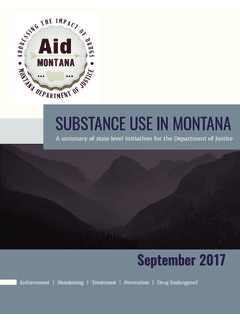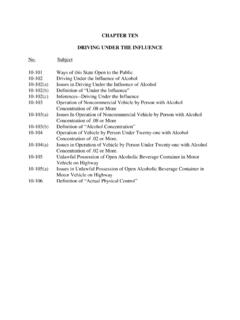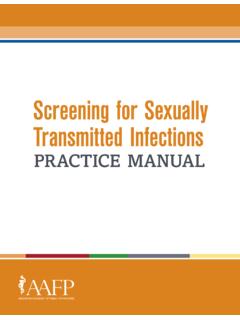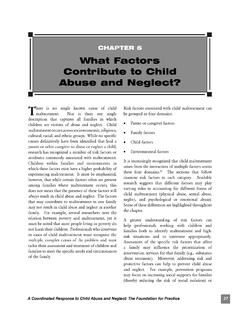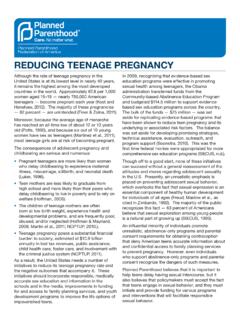Transcription of Can I get an Order of Protection? I think I want an Order ...
1 Can I get an Order of protection ? You can ask for an Order of protection if the person abusing you or threatening you is a family member, intimate partner, or former intimate partner. You can also ask for an Order of protection if someone is stalking you, has sexually assaulted you, or has assaulted you, whether or not you have had an intimate relationship with that person. I think I want an Order of protection . What do I do first? First, please talk to a victim advocate. A victim advocate can help you decide if an Order of protection is right for you.
2 Sometimes an Order of protection would not be in your best interest. An advocate can help you figure out if an Order of protection would help you or not. S/he can also give you more information about how to apply for an Order of protection . What do I do next? You file a petition for an Order of protection in court. There is no cost. You have to sign an affidavit about what your abuser has done to you. An affidavit is a form that you swear is true and sign in front of a notary or a Judge. If the court finds you are in danger of harm, you will first get a Temporary Order of protection .
3 Then a hearing will be set. You must attend the hearing if you want the Temporary Order of protection to stay in place. Your abuser can attend the hearing, too. S/he can tell his or her side of the story to the judge. At the hearing, the judge will decide if you should have an Order of protection . An Order of protection can last a few days, months, years, or be permanent. Where do I file an Order of protection ? A petition for Order of protection can be filed in city, justice, or district court. If you and the other party have a family law case happening in district court, the petition must be filed in district court.
4 A family law case includes dissolution and parenting plans. Do I need an attorney? You do not need an attorney to get an Order of protection . But it may help you to talk to an attorney before you file a petition for an Order of protection . It may help you to talk to an attorney before your hearing or to have an attorney help you at the hearing. You may choose to represent yourself. If you ask a court to grant you an Order of protection , the following information will help you understand the hearing process and preset your case effectively.
5 Do I have to go to the hearing? Yes. If you are the Petitioner and do not attend the hearing, the court will dismiss your case, which means that you will not receive an Order of protection . What if I cannot attend? If you absolutely cannot attend the hearing because of an important reason (such as sickness, job interview, family emergency, etc.), you should call the court in which your hearing is set and ask that the hearing be rescheduled. Some courts may require you to file a document called a motion for continuance.
6 How do I prepare for the hearing? Decide the relief you want the court to give you. You will be asking the judge to grant you an Order of protection against the person who abused you or threatened to abuse you. You need to tell the judge specifically what you want the Order to say. You can ask the judge to: Order the Respondent not to hurt you; Order the Respondent not to harass or otherwise disturb you (and/or your children); Order the Respondent not to contact you (in person, through 3rd parties, through writing, by email, by telephone, etc.)
7 ; Order the Respondent to stay a specific distance from you, your residence and/or your place of employment; Order the Respondent to vacate the home you are living in; Order the Respondent to allow you access to your personal property; Order the Respondent not to possess a gun or other dangerous weapon; Order the Respondent to attend batterer s intervention counseling or drug/alcohol counseling. Decide the evidence you want to use. Evidence is what you present in court to prove that the Respondent has harmed or may harm you (and/or your child).
8 Evidence can be your testimony, the testimony of witnesses, documents, photos, or objects such as torn clothing or a weapon. What happens at the hearing? If the Respondent does not appear at the hearing, the judge may grant an Order of protection for you without considering any evidence or may require you to present your evidence so that s/he has it on the record. It is likely (but not guaranteed) that if the Respondent does not appear, you will be granted an Order of protection . If the Respondent appears and agrees that an Order of protection should be granted, the judge will probably grant one for you.
9 Your Case If the Respondent appears and disagrees that an Order of protection be granted, the judge will probably ask you to present your case (your side of the story) first. This includes: Being sworn in to testify truthfully; Taking the witness stand; Presenting your evidence; Asking for the specific relief you need. The judge may ask you specific questions about the situation. After you have finished, the Respondent will have a chance to ask you questions. After the Respondent has finished asking you questions, you will have the opportunity to ask questions of your witnesses.
10 After each of your witnesses is done testifying, the Respondent has the opportunity to ask them questions. Evidence for Petitioners Evidence is what you present in court to prove that the respondent has harmed or may harm you (and/or your child). Evidence can be your statements (called testimony ), documents, photos, or objects such as torn clothing or a weapon. The following are examples of the types of evidence that can be used to show the judge that you are in danger and need an Order of protection .
